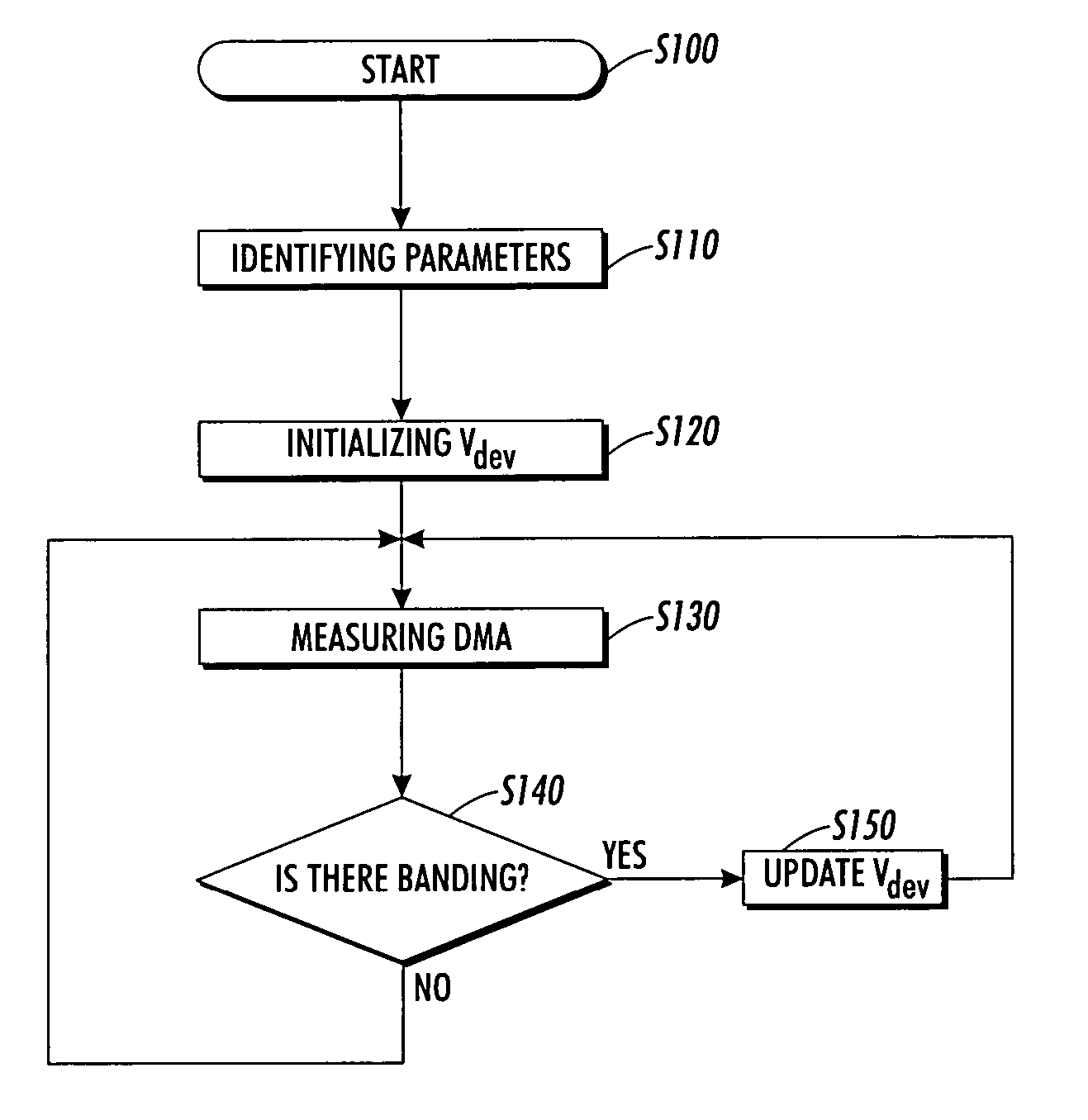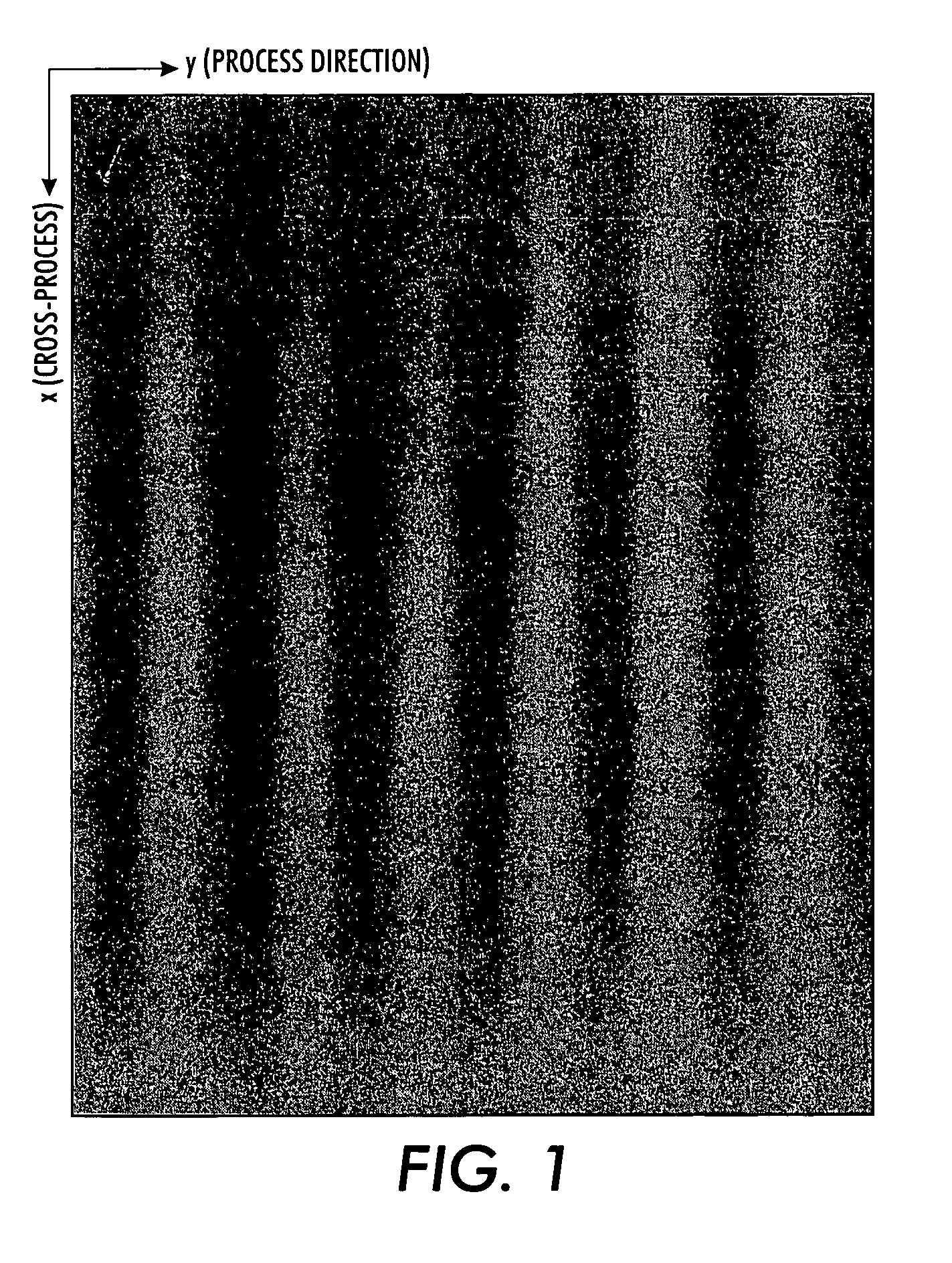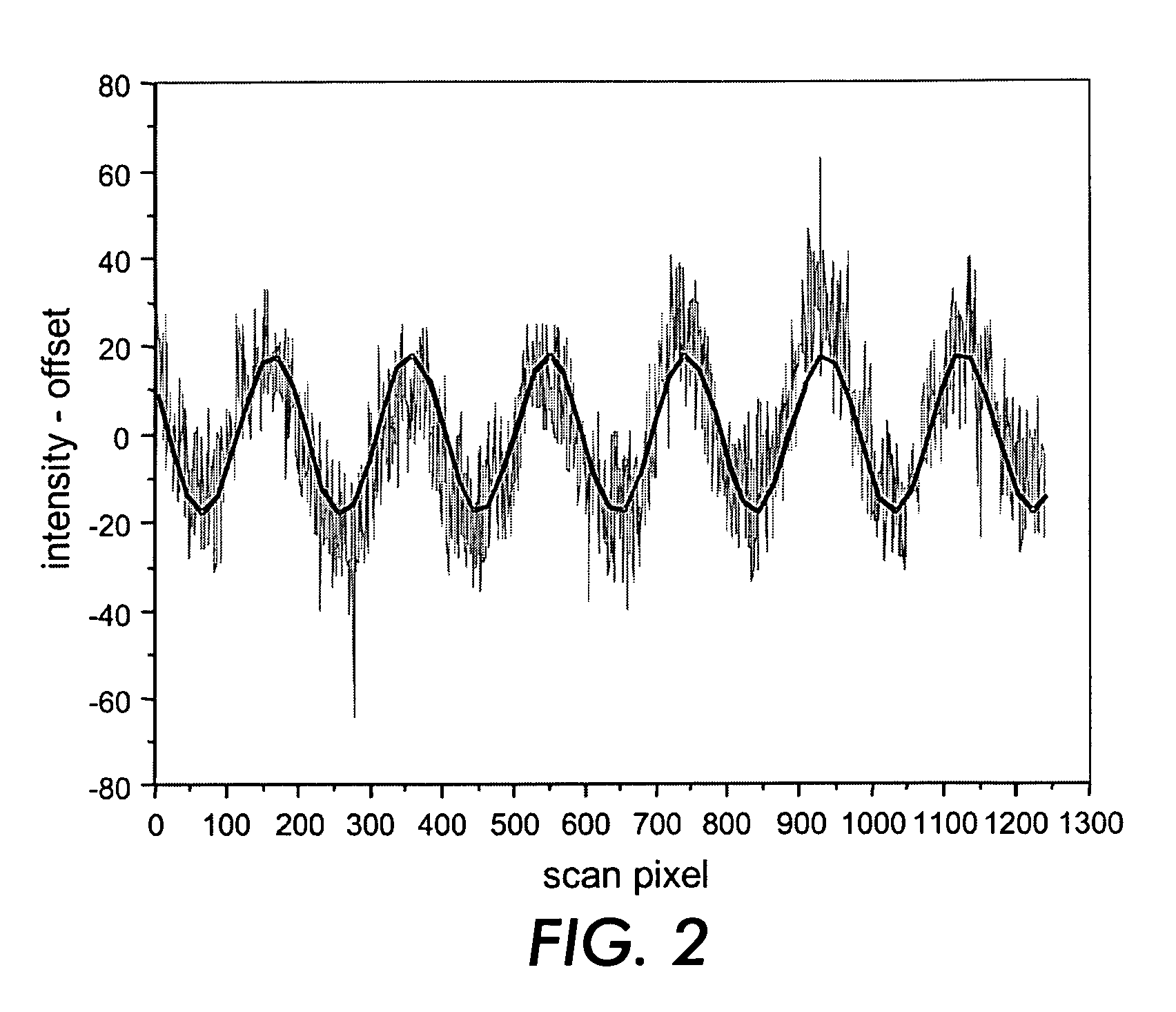Systems and methods for correcting banding defects using feedback and/or feedforward control
a technology of feedback and/or feedforward control, applied in the field of system and method for detecting and correcting image quality defects, can solve problems such as non-uniform photoreceptors, image quality defects introduced, banding defects, etc., and achieve the effect of reducing unit machine cost and being easy to scal
- Summary
- Abstract
- Description
- Claims
- Application Information
AI Technical Summary
Benefits of technology
Problems solved by technology
Method used
Image
Examples
Embodiment Construction
[0028]These and other features and advantages of this invention are described in, or are apparent from, the following detailed description of various exemplary embodiments of the systems and methods according to this invention.
[0029]FIG. 3 schematically illustrates an exemplary image marking device developer housing 10, such as an electrophotographic (EP) device developer housing, and one or more optical sensors 50 that can be used to implement a feedback and / or feedforward loop control architecture for controlling banding defects in an image. As shown in FIG. 3, typical EP devices, such as photocopiers, scanners, laser printers and the like, may include a photoreceptor drum 20, which may be an organic photoconductive (OPC) drum 20, that rotates at a constant angular velocity. The EP device shown in FIG. 3 further includes a magnetic roll 30 and a trim bar 40.
[0030]As the OPC drum 20 rotates, it is electrostatically charged, and a latent image is exposed line by line onto the OPC dr...
PUM
 Login to View More
Login to View More Abstract
Description
Claims
Application Information
 Login to View More
Login to View More - R&D
- Intellectual Property
- Life Sciences
- Materials
- Tech Scout
- Unparalleled Data Quality
- Higher Quality Content
- 60% Fewer Hallucinations
Browse by: Latest US Patents, China's latest patents, Technical Efficacy Thesaurus, Application Domain, Technology Topic, Popular Technical Reports.
© 2025 PatSnap. All rights reserved.Legal|Privacy policy|Modern Slavery Act Transparency Statement|Sitemap|About US| Contact US: help@patsnap.com



